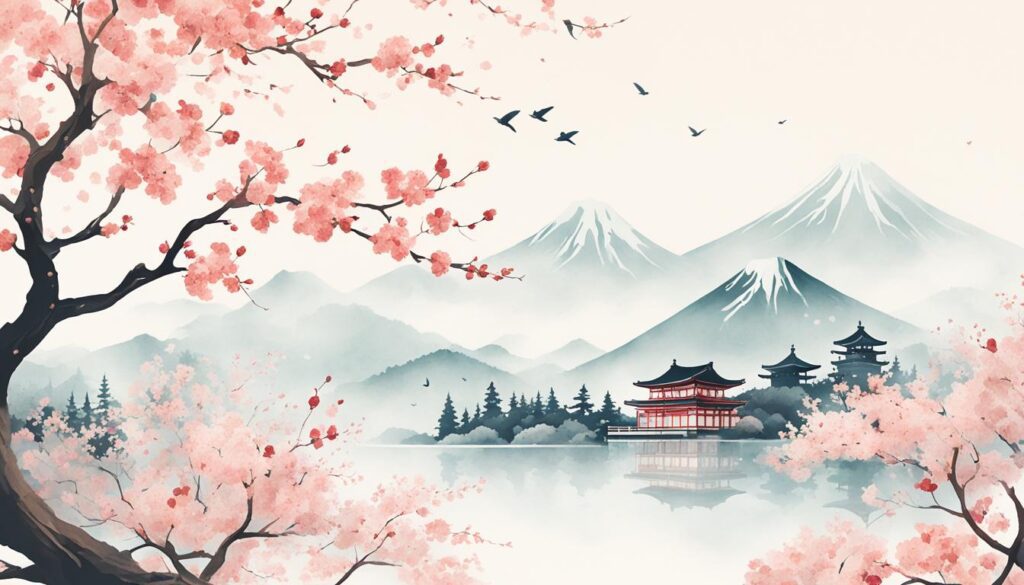In Japanese culture, the concept of pain is deeply ingrained. From traditional remedies to cultural expressions, pain carries a significant meaning and understanding. In this article, we will explore the various terms and concepts related to pain in Japanese. Whether you are interested in Japanese pain relief techniques, want to know how to say “pain” in Japanese, or wish to delve into the cultural significance of pain management in Japan, this article will provide valuable insights.
Throughout this journey, we will discover the meaning and grammar behind pain-related terms, explore their pronunciations, and uncover the contextual and cultural usage of these expressions. Additionally, we will dive into the fascinating word in Kanji that represents the concept of pain in Japanese.
So, let’s embark on this enlightening exploration of pain in Japanese culture, where centuries-old traditions and modern perspectives intertwine to create a unique understanding of pain and its remedies.
Exploring Shikuhakku: The Four and Eight Kinds of Suffering
In Japanese culture, the concept of pain is deeply intertwined with Buddhist beliefs. One such concept is “shikuhakku,” which refers to the four sufferings and eight sufferings. “Shikuhakku” acknowledges that suffering is an inherent part of the human experience. It recognizes that life is filled with intense struggles and distress.
The four sufferings encompass the inevitable aspects of existence: birth, old age, disease, and death. These are fundamental experiences that all individuals will encounter at some point in life. The additional eight sufferings include parting from loved ones, meeting people one dislikes, not getting what one seeks, and the pains of the five skandha.
Interestingly, the term “shikuhakku” originates from Sanskrit, where it is known as “duhka.” This Sanskrit name highlights the Buddhist roots of the concept and further emphasizes the recognition of suffering as a fundamental part of human existence.
Through the exploration of “shikuhakku,” a deeper understanding of the Buddhist concept of pain and suffering is gained. This concept provides a framework for comprehending the challenges and distress that individuals face throughout life. It encapsulates the complex nature of human existence and invites contemplation on the impermanence of life and the trials and tribulations that accompany it.
Similar Expressions of Suffering in Japanese
In addition to shikuhakku, the concept of suffering in Japanese culture is further reflected in several other expressions. These phrases capture the essence of hardship, pain, and trials that individuals may experience in their lives.
Shichitenbattou: Writhing in Agony
The term “shichitenbattou” describes the intense physical and emotional struggle that manifests as writhing in agony or tossing about due to great pain. It conveys the profound suffering and anguish one may endure in the face of overwhelming circumstances.
Kannanshinku: Trials and Tribulations
“Kannanshinku” represents the concept of encountering various trials and tribulations. It encompasses the challenges, setbacks, and difficult situations individuals may face throughout their lives. This expression acknowledges the hardships as an integral part of the human experience.
Kibone ga Oreru: Mental Exhaustion
“Kibone ga oreru” refers to the mental exhaustion or weariness that arises from constant worry and anxiety. It symbolizes the burden of enduring persistent emotional distress and the toll it takes on one’s well-being.
Senshinbanku: Enduring Numerous Hardships
The term “senshinbanku” signifies the process of going through numerous hardships. It encapsulates the resilience and perseverance needed to navigate a series of challenging circumstances and emerge stronger on the other side.
Understanding Mono no Aware: The Awareness of Impermanence
Mono no aware is a Japanese expression that encapsulates a deep understanding of the impermanence and transient nature of things. It is a concept that evokes a gentle sadness or wistfulness at the passing of time and the realization that everything is subject to change.
In Heian period literature, the roots of mono no aware can be found, particularly in works such as “The Tale of Genji” and the poetry collection “Man’yōshū.” These literary pieces beautifully capture the ephemeral nature of life, emphasizing the delicate beauty that arises from its transitory state.
The term “mono no aware” can be broken down to provide further insight into its meaning. “Mono” refers to “things” or “objects,” while “aware” can be translated as “sensitivity” or “emotion.” Thus, mono no aware can be understood as an emotional response or sensitivity towards the transience and impermanence of the world.
An image that aptly represents the essence of mono no aware can be viewed below:

Origins and Analysis of Mono no Aware
Motoori Norinaga, a prominent Japanese cultural scholar, focused on mono no aware in his literary criticism of The Tale of Genji and other Japanese works. He saw it as a central theme in The Tale of Genji and believed that understanding mono no aware was essential for a learned person in aristocratic society. Norinaga’s articulation of mono no aware was influenced by poetic readings of The Tale of Genji and its concept of beauty.
Motoori Norinaga was a prominent Japanese cultural scholar who played a significant role in exploring and analyzing mono no aware. His focus on this concept and its presence in The Tale of Genji shed light on the depth of Japanese literature and the interplay of beauty, emotions, and impermanence. Norinaga’s analysis was grounded in his studies of classical Japanese texts, including the Man’yōshū, and his poetic readings provided valuable insights into the cultural and philosophical dimensions of mono no aware.
The Significance of Mono no Aware in Contemporary Culture
Mono no aware, the Japanese concept of an awareness of impermanence and the transient nature of things, continues to hold significant value in traditional literary criticism in Japan. This concept has resonated with various artists, including authors, manga artists, and filmmakers, who incorporate the theme of impermanence and the passage of time in their creations. Notable figures such as Yasunari Kawabata, Isao Takahata, and Sunao Katabuchi have embraced the essence of mono no aware to evoke a sense of gentle sadness and contemplation in their works.
Yasunari Kawabata, a renowned writer and Nobel laureate, is particularly associated with mono no aware. His novels, such as “Snow Country” and “The Old Capital,” beautifully depict the fleeting nature of life and the bittersweet emotions that arise from it.
In the world of manga, artists like Hitoshi Ashinano, Kozue Amano, and Kaoru Mori have skillfully integrated mono no aware into their storytelling. Ashinano’s “Yokohama Kaidashi Kikou” portrays the tranquility and melancholy of a post-apocalyptic world with a touch of fleeting beauty. Amano’s “Aria” series explores a nostalgic future city on Mars, where the passing of time is celebrated with grace and appreciation. Mori’s “Emma” transports readers to Victorian-era England, immersing them in a tale of love, societal constraints, and the transient nature of relationships.
In the realm of film and anime, directors Isao Takahata and Sunao Katabuchi have artfully incorporated mono no aware into their works. Takahata’s “Grave of the Fireflies” depicts the tragically short-lived lives of two siblings during World War II, eliciting deep emotions and contemplation of the preciousness of life. Katabuchi’s “In This Corner of the World” delves into the life of a young woman during World War II, skillfully portraying the quiet tribulations of war and the resilience of the human spirit in the face of impermanence.
Through their masterful storytelling, these artists have showcased the enduring significance of mono no aware in contemporary culture. By capturing the essence of impermanence and the fleeting nature of existence, they invite audiences to reflect, appreciate the present, and embrace the beauty found in the ephemeral moments of life.
A Deeper Understanding of Pain in Japanese Culture
When discussing pain in Japanese culture, it becomes evident that the perception of pain extends beyond mere physical sensation. In Japan, pain is seen as an emotional experience deeply intertwined with suffering, influenced by cultural perspectives and philosophical dimensions.
The Japanese language provides unique terms and concepts that shed light on their understanding of pain. Shikuhakku, derived from the Buddhist belief system, encompasses the four sufferings (birth, old age, disease, and death) and the eight sufferings (such as parting from loved ones and not attaining desired outcomes). This concept, rooted in the awareness of human struggles, exemplifies the multifaceted nature of pain in Japanese culture.
Furthermore, mono no aware, a concept originating from Heian period literature, offers insight into Japanese attitudes towards pain. This expression represents an awareness of impermanence and the transient nature of things, evoking a gentle sadness at their passing. Understanding mono no aware unveils a deeper understanding of the emotional dimensions associated with pain in Japanese culture.
By delving into these terms and concepts, we gain a glimpse into the rich cultural perspectives surrounding pain in Japan. It highlights the intricate relationship between pain, emotional experience, and the broader cultural and philosophical contexts in which it is perceived.

